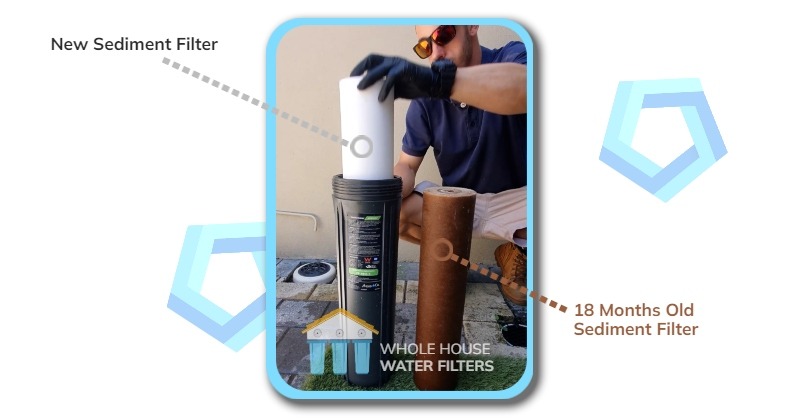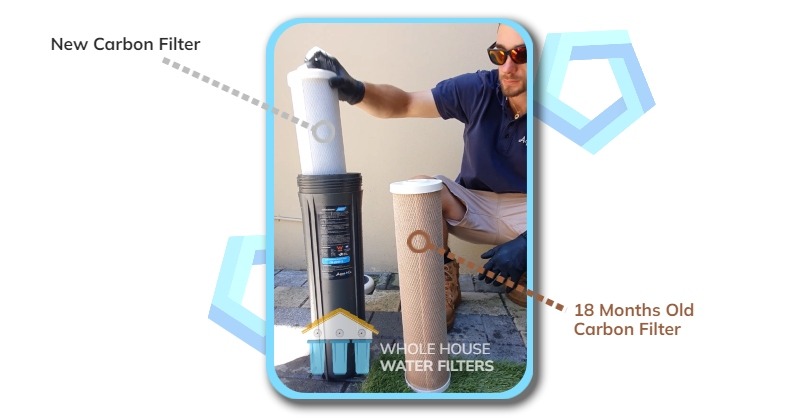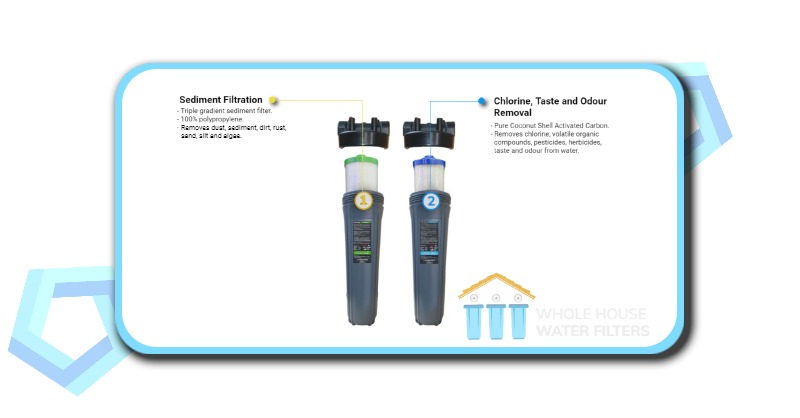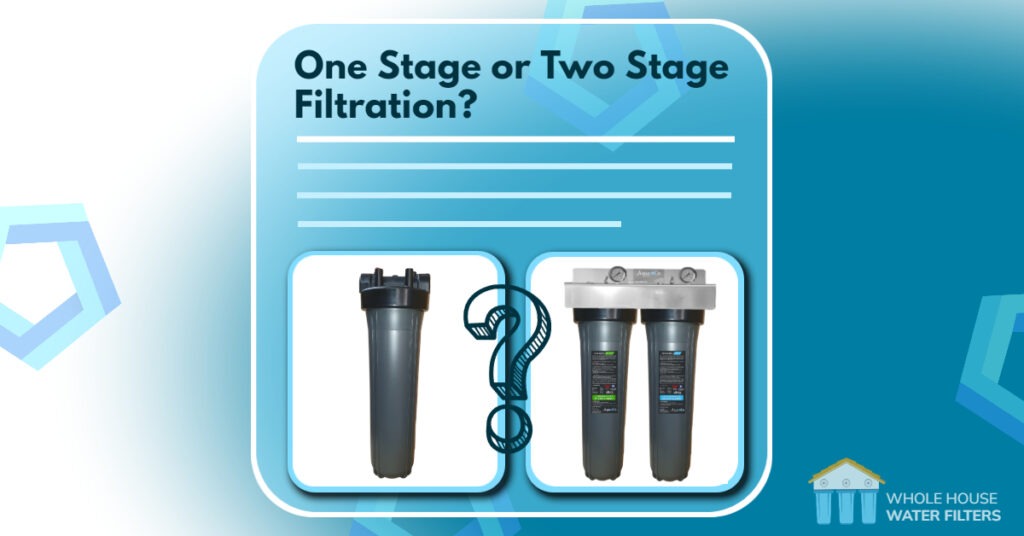Carbon Filters, Sediment Filters, Whole House Water Filtration System
One Stage Filtration or Two Stage Filtration?
One Stage Filtration with a Sediment Filter

If you install only a sediment filter in a water filtration system, it will effectively reduce the presence of dirt, silt, and rust in the water. Sediment filters are designed specifically to remove such particles from the water.
However, it’s important to note that sediment filters are limited in their scope and capability. While they can effectively remove sediments, they won’t address other types of contaminants like chlorine, chemicals, pesticides, and other impurities that may be present in the water.
If your water is already free from chemicals and other harmful substances, using a single sediment filter can still be a beneficial addition to your water filtration system. It will ensure that any physical debris, such as dirt and silt, is removed, improving the overall quality of your water.
However, for comprehensive water purification and to address a broader range of potential contaminants, it is advisable to consider a more advanced water filtration system that incorporates additional filters designed to tackle specific types of impurities. This will provide you with cleaner and safer drinking water for your needs.
One Stage Filtration with a Carbon Filter

Installing a carbon filter without a sediment filter in a water filtration system may result in reduced performance and shortened lifespan of the carbon filter. Here are some potential consequences:
- Clogging: Carbon filters are designed to remove smaller contaminants, such as chlorine, chemicals, and organic matter, from the water. However, if larger particles like sediment, sand, silt, or rust are present in the water, they can quickly accumulate and clog the carbon filter. This can reduce the flow rate of water and decrease the effectiveness of the carbon filter in removing smaller contaminants.
- Reduced Lifespan: Clogging caused by sediment and other larger particles can also reduce the lifespan of the carbon filter. When the carbon filter is clogged, it may need to be replaced more frequently, leading to higher replacement costs and more frequent maintenance.
- Decreased Water Quality: Without a sediment filter to capture and remove larger particles, sediment and other visible contaminants may pass through the carbon filter and remain in the treated water. This can negatively impact the taste, odour, and clarity of the water, as well as reduce the overall effectiveness of the water filtration system in providing clean and safe drinking water.
- Maintenance Issues: Without a sediment filter to protect the carbon filter, the carbon filter may require more frequent cleaning and maintenance to remove accumulated sediment and particles. This can be time-consuming and inconvenient, and may result in higher maintenance costs over time.
- Potential Damage to Carbon Filter: The presence of sediment and larger particles in the water can also potentially damage the carbon filter. Abrasive particles like sand and rust can wear down the carbon filter, reducing its efficiency and effectiveness in removing smaller contaminants from the water.
In summary, installing just a carbon filter without a sediment filter can result in reduced performance, shortened lifespan, and potential maintenance issues for the carbon filter. It is generally recommended to use sediment filters as a pre-filter to capture and remove larger particles before the water passes through the carbon filter, to optimize the performance and longevity of the water filtration system.
Two stage Filtration with a Sediment and a Carbon Filter

The most common setup for whole house water filters is a Two Stage Filtration System. This system consists of two stages, each serving a specific purpose in purifying the water.
- First Stage: The initial stage incorporates a Sediment Filter, designed to target and remove larger particles from the water. This includes common impurities such as dirt, sand, silt, rust, and other physical debris.
- Second Stage: Following the Sediment Filter, the water passes through a Chemical Filter. This stage is responsible for reducing and eliminating various chemicals and contaminants present in the water. It can help remove chlorine, pesticides, herbicides, volatile organic compounds (VOCs), and other harmful substances.
The Two Stage Filtration System is considered efficient and serves as a basic yet effective method to protect any home’s water supply from both physical particles and chemical contaminants. By removing larger debris and harmful chemicals, this system helps improve the overall quality of water used throughout the entire house.
However, it’s important to note that the effectiveness of this system might have limitations when dealing with specific or more complex water quality issues. Depending on the water source and the types of contaminants present, additional filtration stages or specialized filters may be required for more comprehensive water purification.


